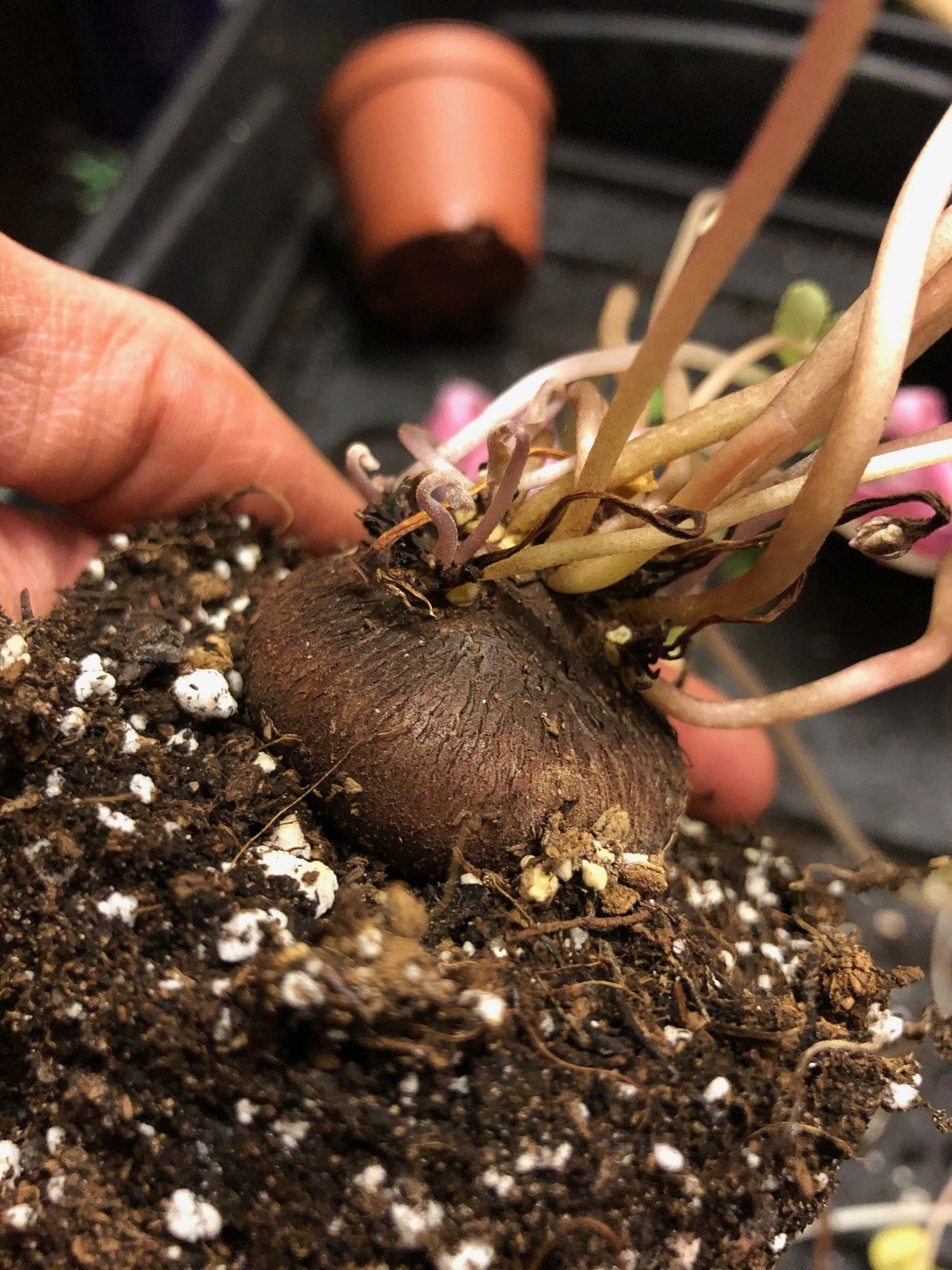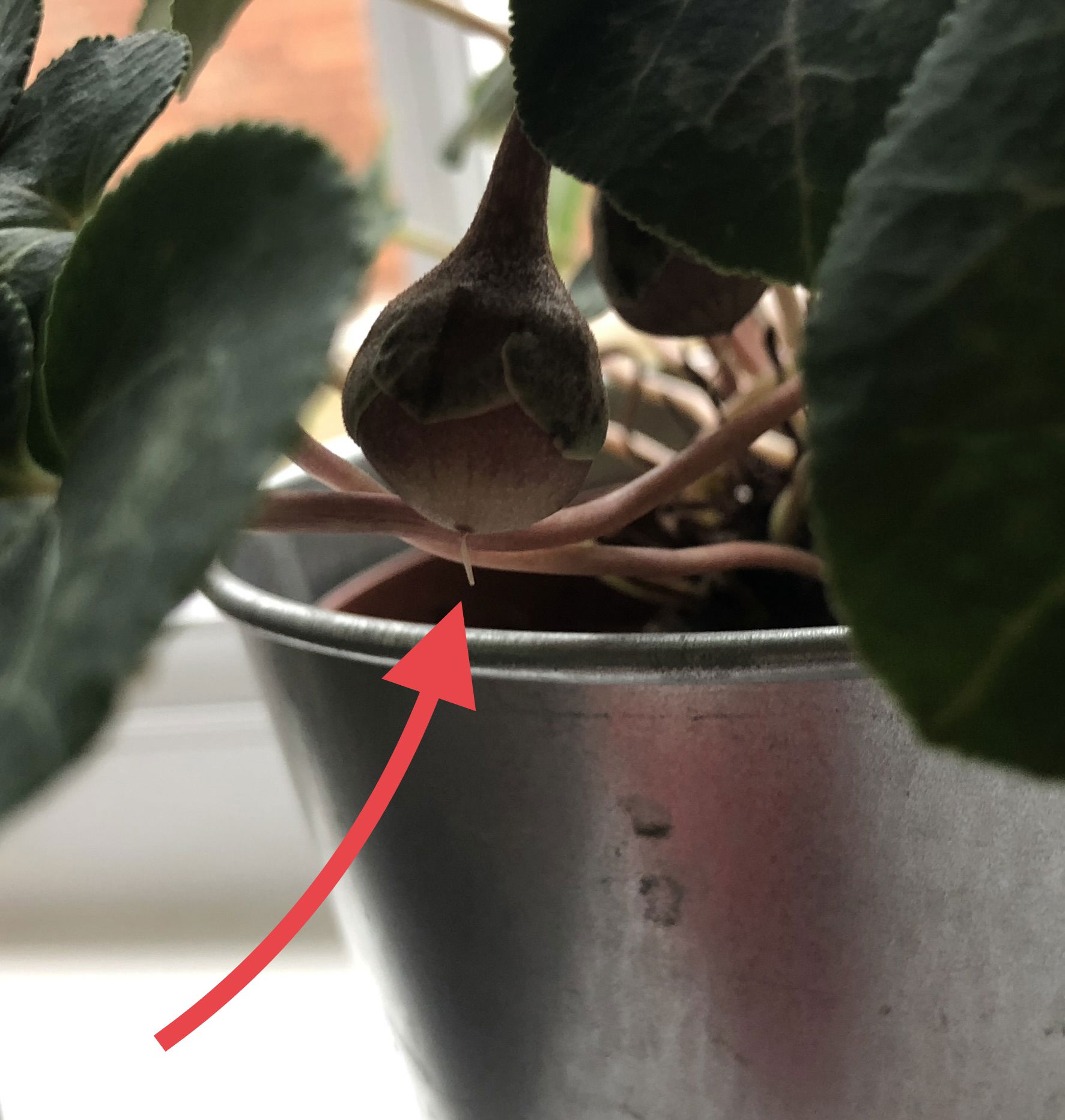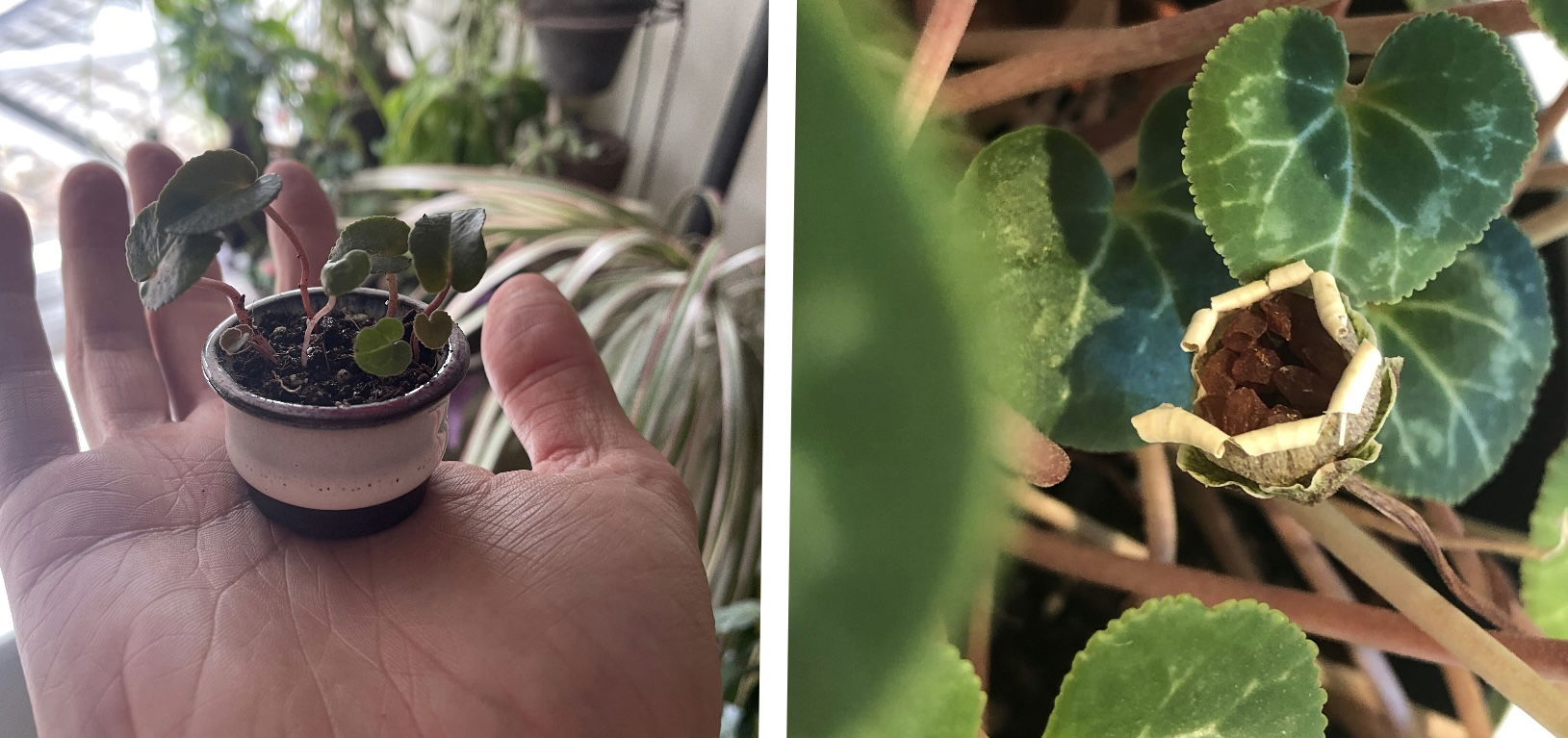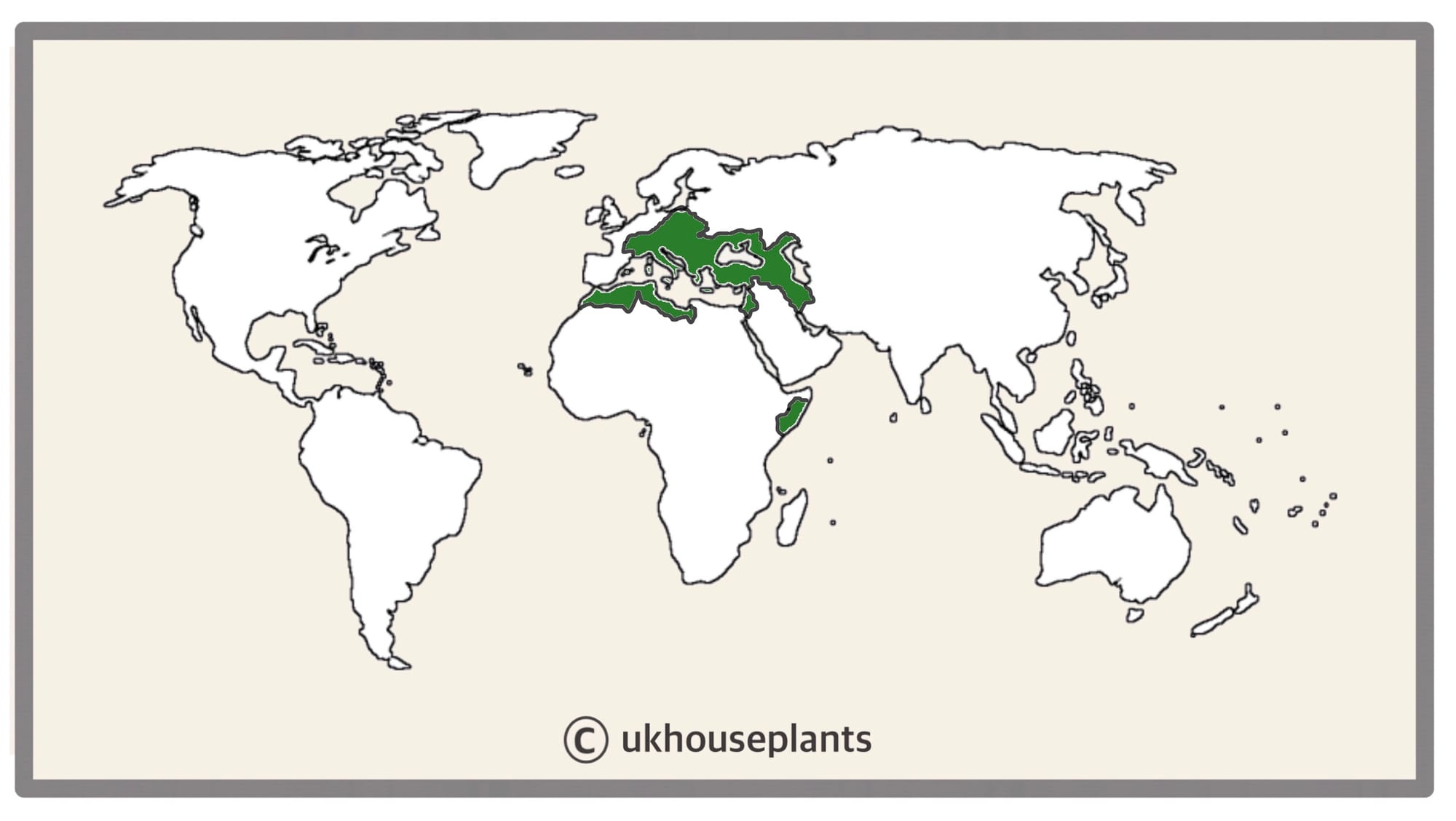
Cyclamen hederifolium
Listen to the Cyclamen Podcast Here!
Contents
- Top Tips
- Location, Water, Humidity & Fertilisation
- Dormancy Period & Achieving Flowers
- Common Issues
- Origins, Temperature, Propagation, Repotting & Toxicity.
Need the answer to a specific plant query? Book a 1-to-1 video call with THE HOUSEPLANT DOCTOR™, the website's friendly author, to overcome and address your niggling problem! Available on iMessage, WhatsApp, Facebook Messenger & more.
Top Tips & Info
- Care Difficulty - Moderate
- There are two stages of a Cyclamen's yearly cycle indoors - its flowering/leafing stage and its dormancy.
- Whilst your Cyclamen is in bloom, provide a few hours of sunlight as long as the soil is checked regularly for dryness.
- Maintain reliable soil moisture to prolong the flowering period. Never water the plant overhead as any moisture that settles in the cubbyholes of the tuber (its 'bulb') will result in rot or 'gooey' foliage. Try using the bottom-up method of submersion as mentioned in this linked article.
- Prune off wilted/yellowed leaves or flowers as they decline, as close to the plant's base as possible.
- Whilst in bloom, feed your Cyclamen using a 'Houseplant' labelled fertiliser every third water, reducing this none when it's serving its dormancy period (& therefore has no foliage or flowers).
- Don't repot!
- Dormancy Care: From mid-spring onwards, prune all of the foliage off, leaving the potted plant in a dry, semi-dark, frost-free location until new growth emerges from the tuber (usually in late summer to autumn). Don't remove from its original pot.
- Keep the soil on the drier side to live. Remember the phrase 'drenches between droughts' when deciding whether or not to rehydrate your Cyclamen.
- You can also force a Cyclamen out of a dormancy period by placing it in a more favourable location with warmer temperatures and better light exposure (Windowsills, etc.). Increase watering and feeding as necessary, too.
- Except for issues of root rot, always keep the plant pot-bound for as long as possible to reduce the risk of 'Transplant Shock' and over-watering related issues. THE HOUSEPLANT DOCTOR™ recommends planting your Cyclamen in a terracotta pot that's of similar size to its current pot.
- Every third year, as soon as new leaves emerge (signalling the end of its dormancy), repot in a slightly larger terracotta pot with a 'Cactus & Succulent' labelled potting mix.
Location & Light - 🔸🔸🔸
Whilst the plant is either in bloom or growing more leaves, maintain a bright location with partial sun for quality growth (east or west-facing windows are best). Never situate it in excessively dark locations due to the increased chance of root or tuber rot (symptoms include wilting or excessive yellowing of leaves). If it's too dark for a newspaper to be read, it'll be too dark for the plant!
Once all of the foliage and flowers die back (usually at the start of spring), keep the potted plant in the dark, cool location until new leaves re-appear in early August. If the plant still has its foliage during this time, keep the plant situated in a bright, indirect area with no direct sun. It's important to maintain dry soil during this period, as the plant won't be soaking up as much moisture, which in turn will result in rot.
Water - 🔸🔸
Whilst the Cyclamen is Growing Leaves or In Bloom: The best way to check for soil moisture is by feeling the weight of the pot it's growing in. If the pot feels heavy and the soil looks moist, don't water. Only rehydrate the potting mix once the pot feels light in weight and the soil has become slightly dry.
When it's time for another drink make sure to water the soil using the bottom-up submersion method. Place the plant on a saucer one water around a quarter deep until total absorption. Repeat this step twice a week if needs be, especially with those grown in brighter or warmer locations in the home. Wetting the foliage each time you come to water will allow excess moisture to sit in the cubbyholes, causing grey mould or basal rot to develop. If the bulb becomes mushy, it's game over.
Dormancy Period (Once the plant starts to decline & there are no more flowers): As Cyclamen go dormant during the spring and summer months, be sure to reduce watering further to reinforce this crucial period. Only rehydrate the soil once the leaves begin to wilt slightly. During its decline (yellowing leaves & fading flowers), consider pruning all of its foliage back around 2cm (1 inch) from the soil line to force a dormancy period. Scroll down to the next section to learn more.
Water-Related Symptoms
Under-watering symptoms include stunted growth, no flowering and crispy or yellow leaves; these issues are usually due to either too much heat/light or forgetfulness. Over-watering symptoms include mushy undergrowth, rotting flowers or leaves, and root or tuber rot.
Humidity - 🔸
Average room humidity is more than enough to occupy a Cyclamen, as too high humidity and poor air circulation will result in powdery mildew. Botrytis petal blight is caused when excess moisture from the atmosphere settles on the flower's intricate body, allowing detrimental bacteria to thrive.
Fertilisation - 🔸🔸
If you're looking to save money, simply use a 'Houseplant' labelled feed to promote more flowers and all-round health. THE HOUSEPLANT DOCTOR™ recommends to feed a Cyclamen every third water whilst in bloom, before reducing this to every fourth water whilst it's growing just leaves.
During its dormancy period (& when it begins to decline), feeding isn't essential until the foliage begins to re-emerge in late summer.
Dormancy Care & Annual Flowers
To get the most out of your Cyclamen, provide a sufficient dormancy period which must be served after flowering. Although most will go through this period during the spring to avoid drying from the Mediterranean summer, some will serve this period during the winter. Once the last set of flowers have elapsed, the foliage will begin to yellow and drop off in succession. Although the plant won't look overly impressive during its decline, avoid snipping of the remaining leaves as nutrients will still be being processed through the foliage. Once you're left with a bare tuber, re-hydrate the compost once most of the soil dries out to keep it 'ticking over'. Never over-water the tuber during this period as too soggy soil for extended periods will result in root or tuber rot. Some Cyclamen will hold their leaves throughout the year, and if this is the case, provide a location that offers no direct sunlight and temperatures above 7°C (50°F) to aid a better bloom later in the year.
 A Cyclamen tuber which will need the foliar & flower stalks to be removed before its dormancy. Also, this is how shallow you'd ideally want to plant it in the soil, for the prevention of rot.
A Cyclamen tuber which will need the foliar & flower stalks to be removed before its dormancy. Also, this is how shallow you'd ideally want to plant it in the soil, for the prevention of rot.
During storage, situate the potted tuber in a dark, dryish setting that offers good air circulation and temperatures over 8°C (46°F). A frost-free shed or somewhere with a small amount of light is an excellent setting for the Cyclamen during this time. After around seven months, small petioles holding the leaves will emerge above the soil line, signalling the start of the new season. At this stage, it's best to re-relocate the Cyclamen in a bright, indirect setting with increased irrigations. After a solid few weeks or foliar growth, supplement the plant using a general plant fertiliser every two weeks, swapping to a potassium-based feed during the blooms (like 'Flowering Plant' fertilisers).
Common Issues with Cyclamen
A dark location (shelves, etc.) will promote the vines to develop small or no juvenile leaves, giving the impression of 'leggy' or naked growth. The length between the nodes will also dramatically become larger, harvesting less energy that can be converted into sortable sugars. Be sure to increase the amount of indirect light somewhat, and give the specimen a gentle supplement of 'Houseplant' labelled feed to help with its stored energy.
Over-watering is the biggest issue when it comes to a Cyclamen. Typical signs of this include brown leaves with soft spots on the underside of the leaves, tuber rot or powdery mildew forming in the centre. Not only do you have to be mindful of root rot, but also have a think about which plant parts to keep dry. Its central crown must also remain dry at all times to prevent the development of basal rot or mildew. Avoid waterlogging; there's no point fulfilling a ukhouseplants' phrase, 'drenches in between near-droughts' if the base of the pot is submerged, as issues of rot will arise. For any more information about over-watering related issues, be sure to click on this link.
 If your Cyclamen produces a spherical bulb-like growth where the flowers used to be, don't panic. This just means your blooms were pollinated and will shortly produce small brown seeds that can be collected once the seedpod opens and turns crispy-brown. Feel free to prune it off if you're not fussed about seed development though!
If your Cyclamen produces a spherical bulb-like growth where the flowers used to be, don't panic. This just means your blooms were pollinated and will shortly produce small brown seeds that can be collected once the seedpod opens and turns crispy-brown. Feel free to prune it off if you're not fussed about seed development though!
Too much sunlight will lead to sun scorch, with typical signs including browning or crispy leaves, dry leaf-edges, sunken leaves or stunted growth. Although too little light will cause over-watering issues, too much sunlight will negatively affect the plant as well. A location that offers over two hours of sunlight a day will bring the optimum growth for the Cyclamen. If yours has fallen short of this issue, reduce the amount of sunlight considerably and always be mindful of environmental shock (when too locations offer too different growing conditions). Remove some of the affected leaves and increase irrigations slightly. Only hydrate the plant using the bottom-up method.
As mentioned before, powdery mildew and botrytis are major threats among heavy foliaged plants due to the compact nature that aids the spread of the diseases. Watering above the foliage will allow excess moisture to sit in the cubbyholes of the stem, enticing harmful bacteria to thrive. Remove the affected areas and improve the growing conditions by situating the plant in a brighter location with the use of the bottom-up method of irrigation.
Over-feeding a Cyclamen will bring nothing but grief in the likes of yellowing leaves and weak, dramatic growth. Although a monthly feed is an excellent way to promote healthy growth, the combination of dry soil and harsh chemicals will quickly lead to the burning of roots. The best advice for this issue is to pre-moisten the soil beforehand; not only will this remove the chemical-edge found in fertilisers, but it will also adversely remove the chance of damaging the roots.
Origins
Cyclamen is a perennial genus consisting of twenty-three species ranging mostly from the Mediterranean. Carl Linnaeus first described the genus back in the mid 18th century and named it after the Greek word for 'circle', kyklā́mīnos, which refers to the circular tubers beneath the soil line.
Temperature
5° - 25°C (41° - 78°F)
H3 (Hardiness Zone 9) - Tolerate to temperatures below freezing. Although it can survive frosts and thin snow, refrain from bringing it indoors overnight if the room temperature is above 5℃ (40℉), as a sudden change in temperature may cause environmental shock with weakened spring growth and a lack of flowers over the season's course. Instead, either leave it outdoors or in an unheated conservatory, brightly lit garage or a greenhouse until the risk of frost has elapsed.
Spread
Up to 0.3m in height and 0.6m in width. The ultimate height will take between 4 - 6 years to achieve.
Pruning & Maintenance
Remove yellow or dying leaves, and plant debris to encourage better-growing conditions. While pruning, always use clean utensils or shears to reduce the chance of bacterial and fungal diseases. Never cut through yellowed tissue as this may cause further damage in the likes of diseases or bacterial infections. Remember to make clean incisions as too-damaged wounds may shock the plant, causing weakened growth and a decline in health.
Propagation
Via Seed or Tuber Division.
Seeds (Easy) - You may have noticed a ball-shaped growth on the end of some stems that is hard to the touch - these are its developing seedpods from successful pollination that sometimes happens with this species. Have a look at the image below to see a ready (ripe) seed pod and the two-month old little seedlings that we've grown!
You can collect the seeds once the circular pod has opened, usually around early spring (Feb-Apr). Keep the seeds dry-stored in a warm location until August, before placing them in lukewarm water for around 24hrs in a dark location. In a seed tray or Bonsai dish, sit the seeds around 0.7cm (0.3 inches) deep in 'Cactus & Succulent' labelled potting mix. Maintain evenly moist soil and allow the excess water to freely drain from the pot's base to prevent water-logged conditions. The ideal location for successful germination is in a bright, indirect setting with temperatures above 18℃ (64℉). Keep the pot in a transparent bag to provide a stable level of humidity, along with longer-lasting soil moisture. Germination may take up to three months, so don't discard any unsuccessful seeds until this threshold has been surpassed. Remove the bag once the seedlings produce their second leaf and then split them into their own 7cm (3 inch) pots.
Tuber Division (Moderate) - For the latter propagation method, divide the tubers just before the growing period in late spring into individual specimens, all with roots attached. If it doesn't have roots, don't panic - these should develop once the growing period kicks in. While the plant is still leafless, keep the soil evenly moist with the compost drying out halfway before another water.
 Right: Our successful germinated seedlings, around two months old. Left: A ripe seedpod where the seeds inside are ready to be collected and stored until late summer.
Right: Our successful germinated seedlings, around two months old. Left: A ripe seedpod where the seeds inside are ready to be collected and stored until late summer.
Flowers
Most Cyclamen will bloom during the autumn and winter months, like the Cyclamen persicum (sometimes labelled as 'Cyclamen Allure or Sierra') or C. coum. If you're interested in collecting seeds for next year, allow the flowers to develop spherical shaped seedpods that can be harvested once they become brown and crispy.
Repotting
Only repot your Cyclamen every third year and never whilst it's in bloom.
The best time to repot your Cyclamen is at the end every third dormancy period, when new leaves emerge from its tuber, usually in late summertime. They are, far better potbound for several years due to the heightened risk of root rot and repotting-issues (like transplant shock) - restricted root growth will also increase the chance of blooms, too.
There are two ways in which you can repot a Cyclamen.
Traditional Repotting (Recommended): The first method is by following the traditional way of simply 'copying & pasting' the root ball into a slightly larger pot - preferably terracotta for drainage reasons. In this case, which is relatively straight forward, ensure you use a 'Cactus & Succulent' labelled potting mix and a slightly larger pot, around 3cm wider in diameter than the current one. Give the plant a good water and keep it in a warm, bright location like an east-facing window.
Aggressive Repots: This second method can be done every year or two, by cutting off the entire root system after the last flower dies (usually in mid spring). Simply uproot the tuber (its 'bulb') from the soil and prune ALL the roots off. You'll be left with just the tuber that should be dry-stored on a newspaper (or fabric) until late August when you'll need to 'wake' it up by potting the 'bulb' in a 12cm terracotta pot filled with 'Cactus & Succulent' soil. New growth should emerge within four weeks, followed by its flowers. Follow our watering and fertilisation care tips provided at the top of this article.
Book a 1-to-1 video call with THE HOUSEPLANT DOCTOR™ if you'd like a personal guide to repotting your Cyclamen. This will include recommending the right branded-compost and pot size, followed by a live video call whilst you transplant the specimen for step-by-step guidance and answer any further questions!
Pests & Diseases
Keep an eye out for mealybugs, aphids, scale, thrips, fungus gnats, blackfly, vine weevils, root mealybugs and Cyclamen mites (follow the information mentioned on this article to eradicate this species of mite). Most areas of attack will be its flowers and the underside of each leaf, with the exception of vine weevils and root mealybugs that'll infest the potting medium.
Common diseases associated with Cyclamen are root rot, leaf-spot disease, botrytis, powdery mildew & southern blight - click here to learn more about these issues. Most diseases can be avoided by providing a partial sunny location and not over-watering the soil.
Toxicity
This plant is classified as poisonous, so if small sections are eaten (especially its tuber), there may be instances of vomiting, nausea and a loss of appetite. Consumption of large quantities must be dealt with quickly; acquire medical assistance for further information.
Retail Locations
Cyclamen are found in almost all plant shops, garden centres, DIY stores and supermarkets from October to early February. Discounted specimens can be found at the latter end of this time frame, but always check the solidness of its tuber as basal rot can be an issue.
THE HOUSEPLANT DOCTOR™ recommends purchasing a species called 'Cyclamen persicum'. It's not advised to bring outdoor plants inside because of environmental shock with the risk of introducing new pests into the home.
Book a 1-to-1 Call with THE HOUSEPLANT DOCTOR™
If you need further advice with your houseplants, book an advice call with ukhouseplants' friendly and expert writer today! This can be done via a video or audio call on most apps, including Facebook, FaceTime & Skype. A ten-minute call costs £6.95 (US$8), or £15.95 for thirty minutes. You can ask multiple questions, including queries on plants, pests, terrariums, repotting advice and anything in between. Please consider supporting this service to keep ukhouseplants thriving!
